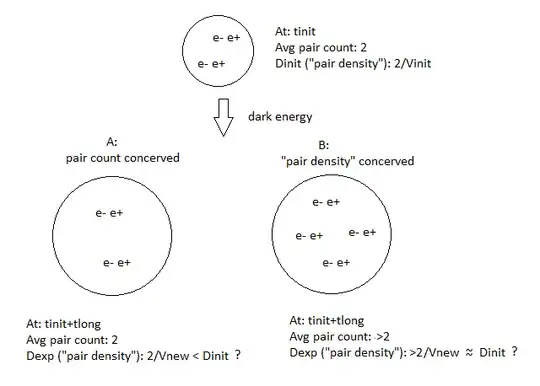I understand that vacuum (i.e. QED vacuum) is theorized to contain spontaneously appearing and annihilating pairs of virtual particles. Suppose the average density of those particles at a given moment in time and a particular location in space is Dinit.
Suppose we wait an amount of time such that dark energy expanded the space at that location and the density of virtual particles is measured to be Dexp.
Will the density at which the virtual particles appear at that location be the same or different? In other words, will Dinit = Dexp or Dinit > Dexp?
Edit: Maybe my understanding is incomplete, this is what I would like to know:
Suppose at some time tinit, the universe has a volume Vinit, and some experiment is performed that estimates that, on average, in some window of time, 2 electron-positron pairs appear and annihilate. The "pair density" Dinit is computed to be 2/Vinit.
Then time tlong passes, dark energy expands space, and the universe now has volume Vnew. The same measurement is performed, estimating the average number of virtual particle pairs appearing and disappearing in the new expanded universe.
Question, would A or B be expected to be observed:
A: New avg number of pairs conserved at ~2, thus pair density Dexp=2/Vnew, and thus Dexp < Dinit?
OR
B: New avg pairs >2, thus pair density Dexp= >2/Vnew, and thus pair density conserved and Dexp ~= Dinit?

